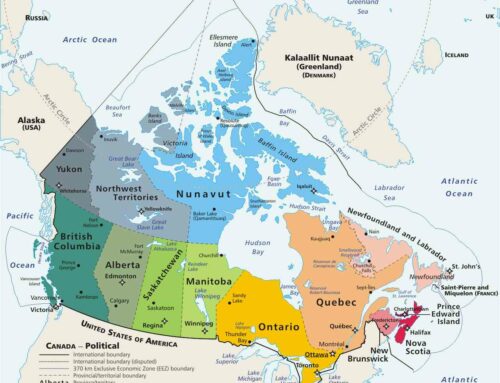When you’re planning to relocate your valued employees to your local office in Canada, cultural integration for transferees is as important, if not more important than hammering out the logistics of the physical move. You may have taken care of all the visa and permit formalities, found the perfect moving company, and helped your transferees secure wonderful apartments, but if your transferees become overwhelmed with unexpected differences in the work and life culture in Canada, you may find yourself negotiating a transfer back home.
(You will be glad to know that Intercultural Training is one of the many services offered by ARIANNE Relocation Specialists.)
It can be easy to overlook this crucial factor of a global relocation to Canada. Most likely, your transferee is moving from one Western culture to another, so won’t be expecting as big a lifestyle shift compared to other global moves. But that doesn’t mean that profound differences don’t exist, and it certainly doesn’t mean they won’t be frustrating at best, and defeating at worst. A transferee may become confused in the workplace if there isn’t a clear company hierarchy, as they may be accustomed to. A sticky situation could arise if your transferee’s straightforward communication style (which was perfectly acceptable back home) is interpreted by Canadian colleagues as hostile or abrasive.
What Cultural Integration Means in Canada:
The idea of cultural integration may be a scary or off-putting term for some. Your employees could interpret the phrase to mean they will be expected to give up their own important values and customs. But in Canada, nothing could be further from the truth. The country is built on successive waves of immigrants from all over the world, and it values and embraces diversity of cultures. The purpose of cultural integration for transferees is not to erase their culture, but to help them balance Canadian culture with their own.
Cultural Integration for Transferees – Before the Move:
In Canada, your employees will experience new ways of doing things, both in and out of the workplace. As their main source of support, you should do your best to provide information about Canadian culture. If you are unfamiliar with the country yourself, reach out to company employees who are already located in Canada. Ask them about their experiences – note the differences they found most jarring and unexpected, and discover how they dealt with them. You can also invest in books or online guides.
Once you’ve done your research, the next step is communicating it to your transferees. This should be done at least two weeks before the move, though it’s best to start as early as a month before the physical relocation occurs. Consider facilitating cultural mentorship by connecting members of your Canadian workforce (both locals and those who have already transferred) with your prospective transferees. You can take advantage of online tools, like instant messaging, Skype, and Google Hangouts. Plan meetings or presentations that cover both workplace culture (etiquette, attitudes, values and best-practices) and the general culture of the new city and country. Encourage your employees to ask questions about subjects that are most interesting and concerning to them. It’s always a good idea to include spouses, significant others, and even children who are also moving in the conversation. Plan for them to attend presentations and address their specific concerns.
Cultural Integration for Transferees – During and After the Move:
During the move, your transferees may experience attitudes or behaviours they do not quite know how to interpret or respond to. Here’s an example: your transferee moves into an apartment that seems perfect at first, but then they realize that it has not been fully cleaned and a couple of the light switches don’t work. They contact the landlord who tells them the problems will be fixed soon. A couple days go by with no word from the landlord and your transferee becomes worried that the issues won’t be addressed.
If you understand the situation, you will be able to calm your transferee down and explain that the idea of “soon” may be a little different here in Canada than it is in your home country. You’ll also be able to reassure them that the problems will indeed be addressed, so they have no need to get anxious. The better you understand Canadian practices, the more you’ll be able to keep your transferees confident and optimistic.
But there are also larger, more long-term cultural integration issues. One of the most significant struggles that newcomers to Canada are likely to encounter is a language barrier. Depending on where they are moving to in Canada, they will feel isolated if they do not speak fluent French and/or English. This can have consequences in day-to-day life, but also in the workplace where good communication is key for success. Canada offers a variety of flexible language courses all over the country that are funded by the Canadian government. There are a number of other programs offered by private institutions and local non-profits, like the YMCA. There are even online courses for flexible scheduling. Helping your employees and their family members find and enroll in these courses is a huge step towards cultural integration.
If you feel that you need additional help to ensure a smooth and successful integration, don’t hesitate to go to a professional. Relocation specialists like ARIANNE provide intercultural training and support. We offer services that help transferees understand cultural gaps, get briefed on local dos and don’ts, learn to confidently navigate social and professional interaction, and understand the building blocks of a smooth, long-term integration.







Leave A Comment